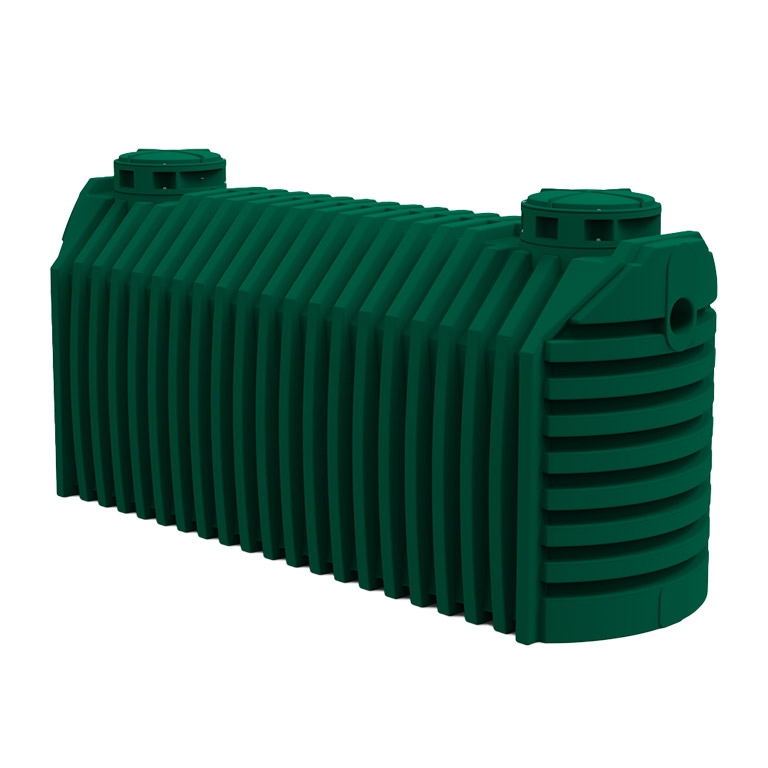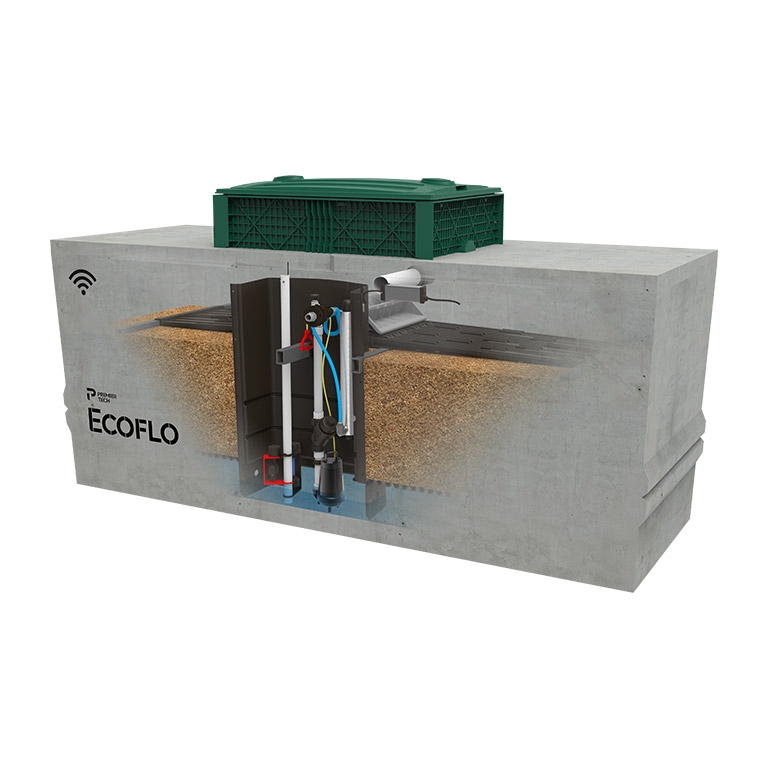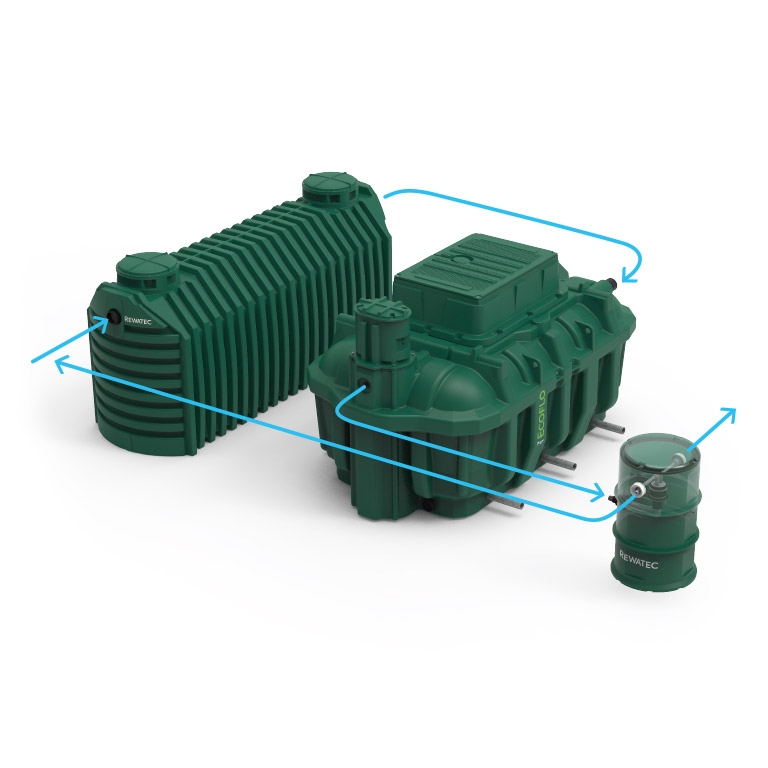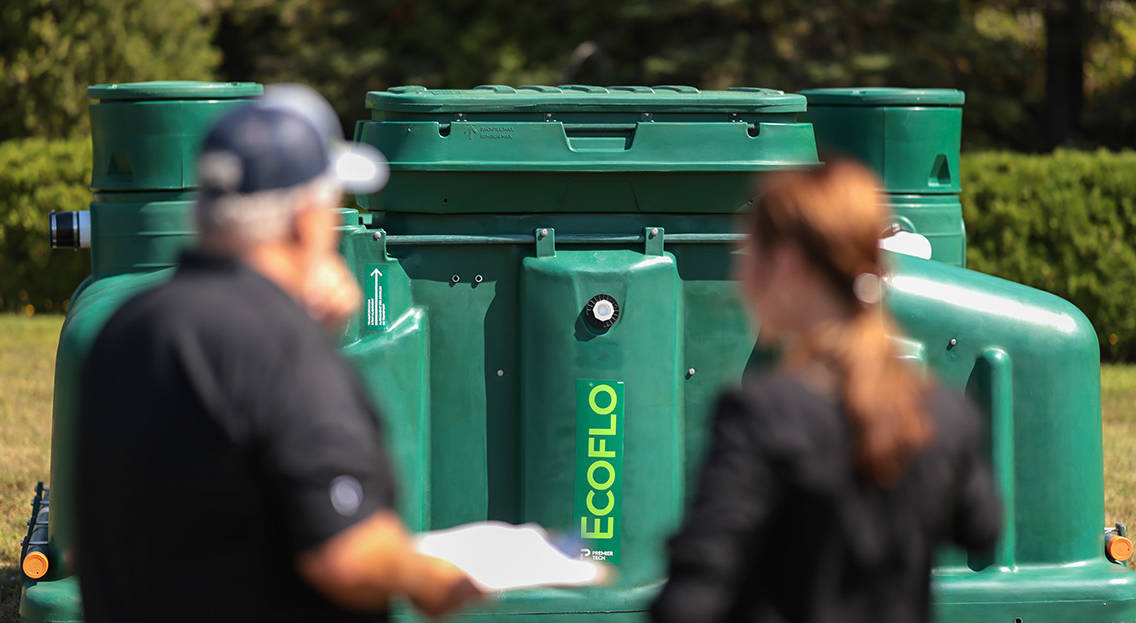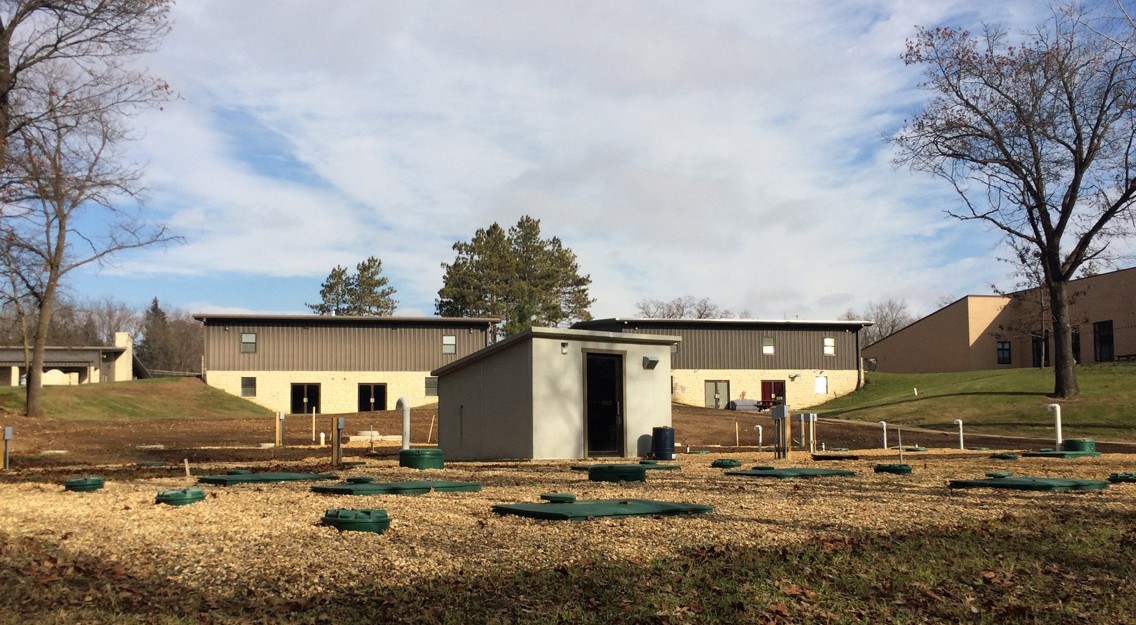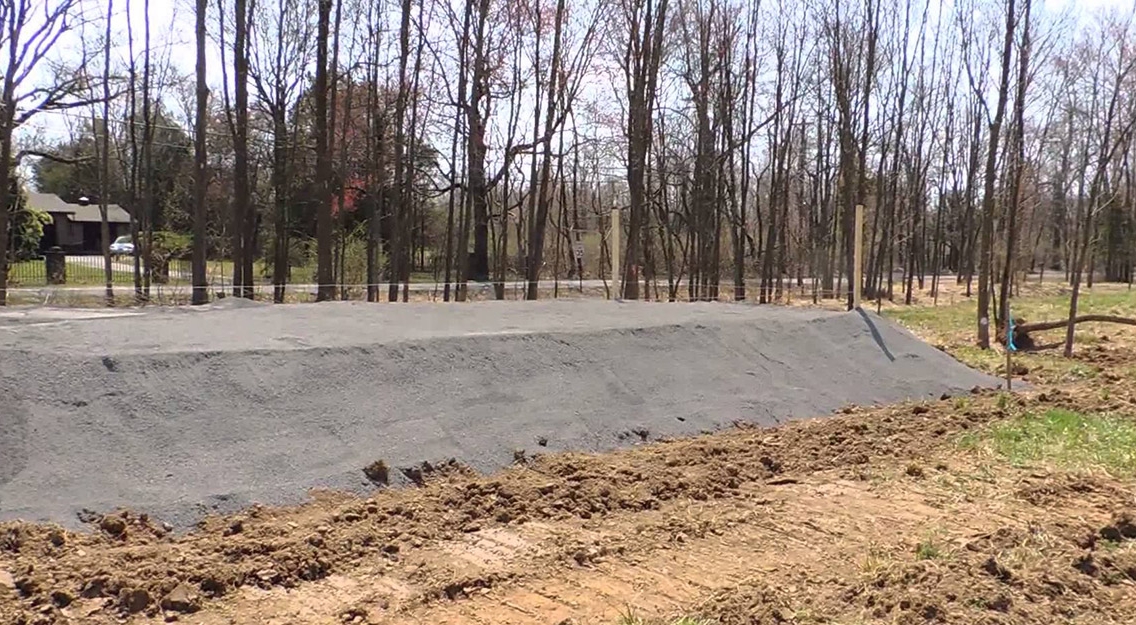Buying guide: Ecoflo compact biofilter vs. Bionest septic systems

Your home or cottage needs an advanced wastewater treatment system. Your septic designer or engineer has laid out the product choices for you. Now it is time to decide which solution is worth your hard-earned dollars.
To make your choice easier, let’s compare the ease of installation, treatment performance, sludge accumulation, and maintenance costs of two popular options: the Ecoflo compact biofilter and Bionest-type systems.
Table of contents
What is the Ecoflo compact biofilter?
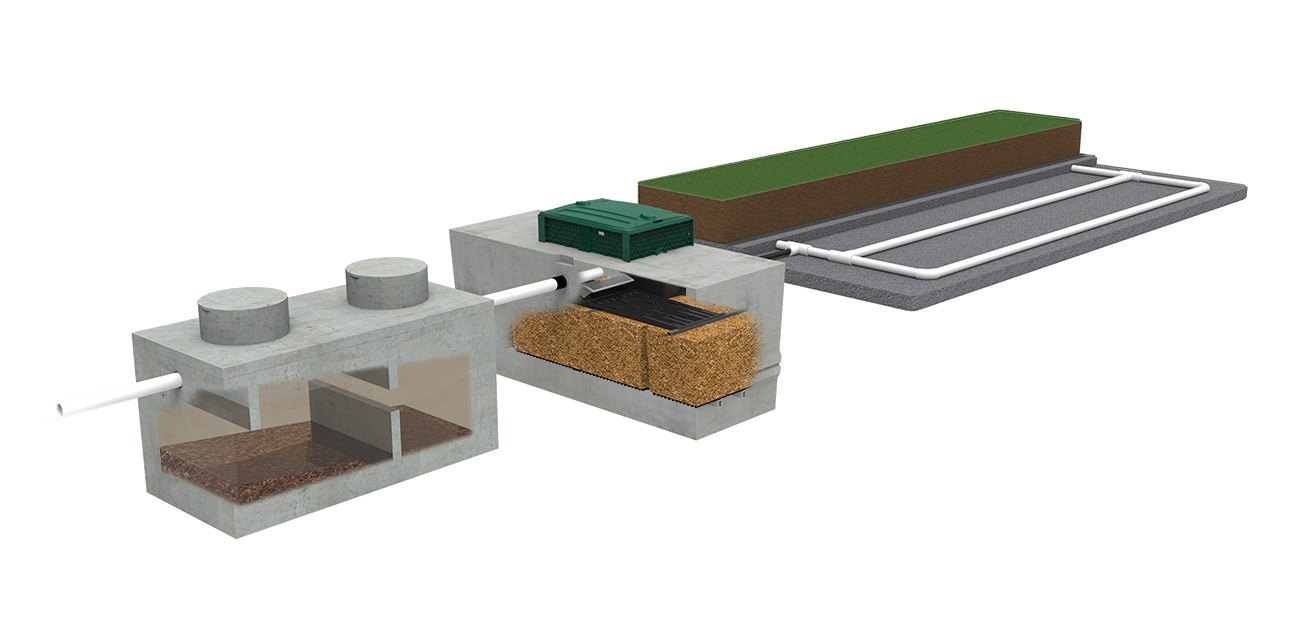
The Ecoflo compact biofilter is part of the media filter category of septic systems. It is an energy-free treatment system that removes wastewater contaminants with a patented filter made of coconut husk fragments or a combination of coco and peat moss.
The Ecoflo treatment process works like this:
- Septic tank
Raw wastewater flows into the septic tank. Solids settle on the bottom of the tank and scum floats to the surface. Partially clarified liquids flow out of the tank through a pipe that leads to the Ecoflo compact biofilter.
- Ecoflo compact biofilter
Inside the Ecoflo compact biofilter, a tipping bucket scatters wastewater across perforated plates. Wastewater drips through the plates and trickles across the all-natural filter. The filter acts as a barrier that removes pollutants through two processes — physical filtration and biological digestion.
- Additional treatment or final dispersal
After wastewater percolates through the filter, the Ecoflo compact biofilter discharges effluent downstream for additional treatment (if required by local regulations) or safe release into the environment.
What is a Bionest-type system?
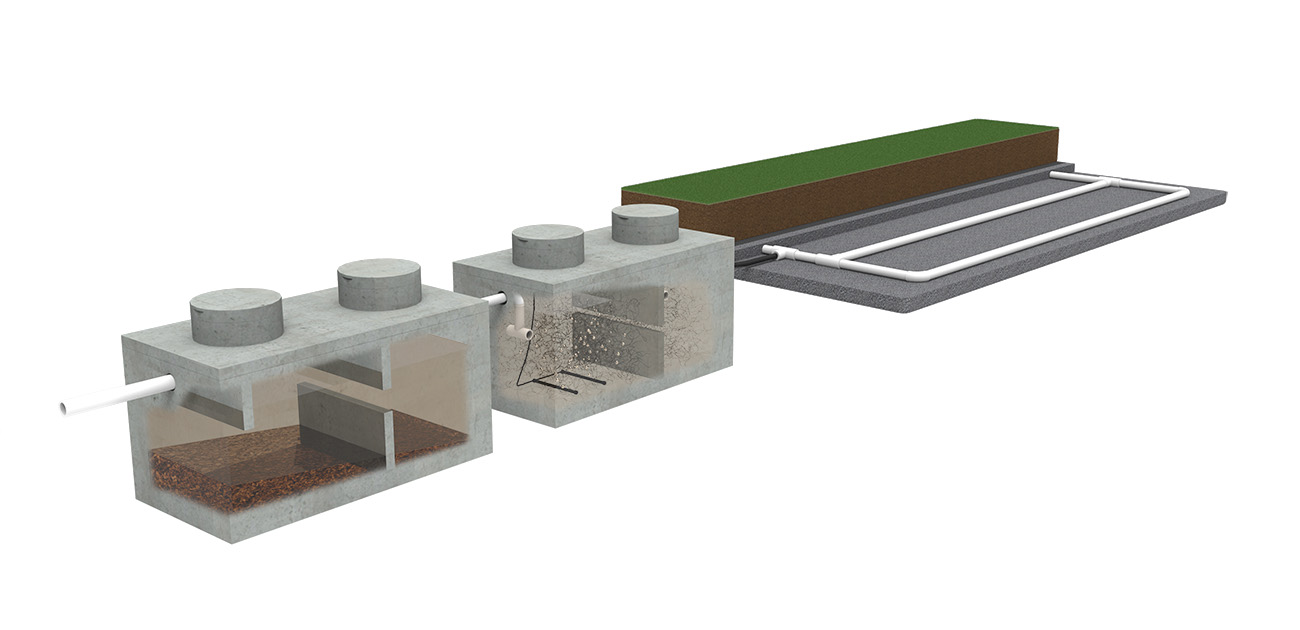
A Bionest-type system falls into the aerobic treatment unit (ATU) category of septic installations. It is an energy-consuming treatment system that removes wastewater contaminants with the help of bacteria that grow on ribbon-shaped plastic supports.
The treatment process works like this:
- Septic tank
Raw wastewater flows into the septic tank. Solids settle on the bottom of the tank and scum forms on the surface. Partially clarified liquids flow out of the tank through a pipe that leads to the Bionest-type reactor.
- Reactor’s first chamber
An electric air pump runs 24/7 to force air through membrane diffusers. These diffusers produce tiny bubbles in the reactor’s first chamber. The oxygen in the bubbles supports the growth of bacteria attached to plastic supports. As the bacteria digest organic pollutants, particles fall to the bottom of the chamber and form sludge. Treated wastewater then flows into the reactor’s second chamber.
- Reactor’s second chamber
Wastewater is clarified inside the second chamber. A recirculation pump then sends a portion of clarified wastewater back to the septic tank, where any remaining particles settle and form sludge.
- Additional treatment or final dispersal
A portion of wastewater in the reactor’s second chamber is not recirculated. The system discharges this wastewater downstream for additional treatment (if required by local regulations) or safe release into the environment.
Ecoflo vs. Bionest ease of installation
When homeowners shop for a new septic system, they often ask how quickly and easily the system can be installed. The question is especially important for time-sensitive projects that are part of real estate transactions.
Ease of installation is based on several factors, including:
- lifting equipment required
- installation materials required
- installation time
- set-up time
Installation and set-up for the Ecoflo compact biofilter

Lifting equipment, installation materials, installation time, and set-up time vary depending on the Ecoflo compact biofilter model you choose.
When the Ecoflo compact biofilter requires an effluent pump, the connection should be performed by a certified electrician. This may cause delays between the time a system is installed and the time it can be used.
- Polyethylene models
Compact tanks suitable for sites with limited space and difficult access. Small to medium equipment is needed to lift and move units during installation. For systems without an effluent pump, no electrical hookup is required. All polyethylene models come pre-assembled and ready to use.
- Polyethylene Pack models (see image above)
Compact tanks similar to regular polyethylene units. The difference is that Pack models include a septic tank and a biofilter assembled in one piece. These all-in-one models can be installed with one excavation, which reduces materials and saves time.
- Concrete models
High-strength tanks suitable for all soils and all water tables. Due to their weight, heavy equipment is needed to lift and move these units during installation. This can pose challenges in remote locations that are inaccessible to large vehicles. For systems without an effluent pump, no electrical hookup is required. Some concrete models come pre-assembled and ready to use.
- Fibreglass models
Compact tanks suitable for small lots and remote locations. Light equipment can lift and move units during installation. No electrical hookups are required. All fibreglass models include an infiltration area under the tank, so a separate drain field is not needed. This reduces the space, materials and time needed for installation.
Installation and set-up for Bionest-type systems
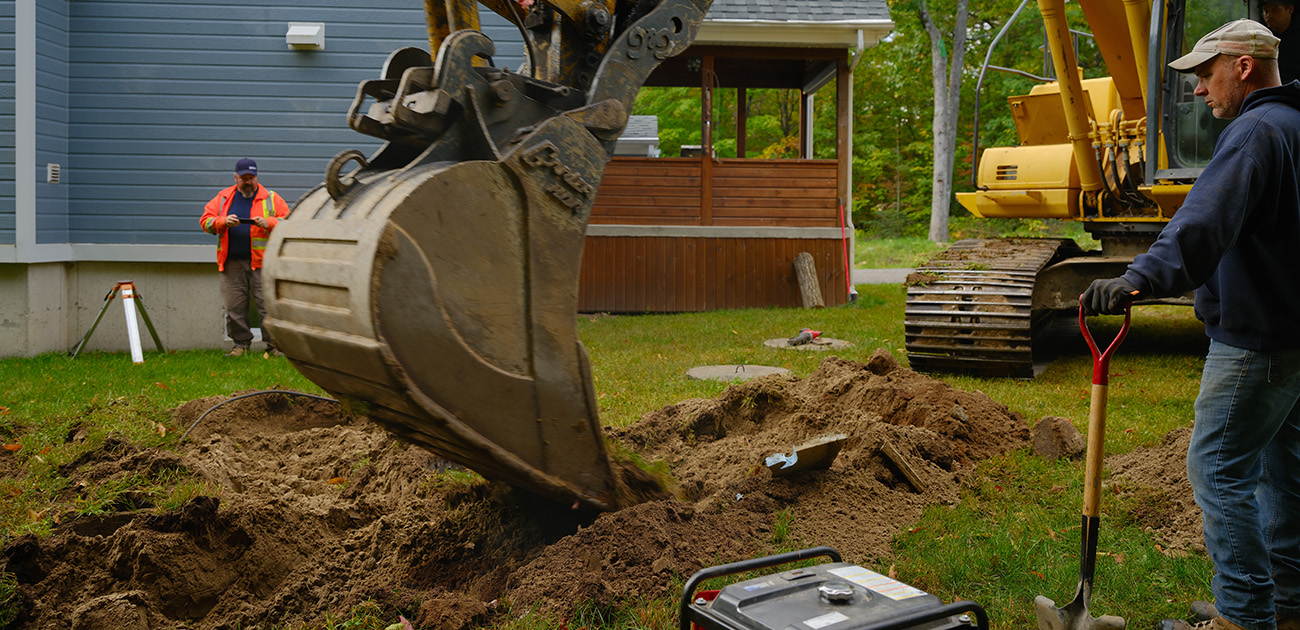
Bionest-type systems are available in concrete or polyethylene. But in Canada, and especially in Québec, the vast majority of installations use concrete models.
Due to the weight of the concrete reactor, large equipment is needed to lift and move the unit during installation. This may add challenges to sites with limited space. It may also make it difficult to install systems in remote locations that are inaccessible to heavy vehicles.
All Bionest-type systems require electrical hookups for the following components:
- air pump
- recirculation pump
- alarm panel
These connections should be completed by a certified electrician, which may cause delays between the time a system is installed and the time it can be used.
Ecoflo vs. Bionest treatment performance
The Ecoflo compact biofilter and Bionest-type systems both meet the testing standards of independent and impartial certification bodies.
To compare treatment performances, we can dive into the results of each system’s tests for certification standard NQ 3680 910, which was developed by the Bureau de Normalisation du Québec (BNQ).
The goal of this 12-month testing process is to measure a septic system’s performance and reliability in a four-season climate. Testing includes many system stresses, such as power outages and periods of non-use.
NQ 3680 910 (class III) results
| Parameter | Requirement1 | Bionest-type system2 | Ecoflo compact biofilter3 |
| CBOD5 (mg/L) | ≤ |
4 | 2 |
| TSS (mg/L) | ≤ |
3 | 2 |
| Fecal coliforms (UFC/100 |
≤ 50,000 | 4,000 | 350 |
1. 30-day average.
2. Source: Bionest Zenith brochure.
3. 100% coconut husk fragment filter.
As you can see, the Ecoflo compact biofilter and Bionest-type systems outperformed certification standards.
Both removed similar concentrations of organic pollutants (CBOD5) and suspended solids (TSS). But the Ecoflo compact biofilter did a much better job of removing fecal coliforms, a bacteria passed through the feces of humans and other warm-blooded animals.
Want more details about Ecoflo certifications across North America? Check out the full list of testing results.
Ecoflo vs. Bionest sludge accumulation
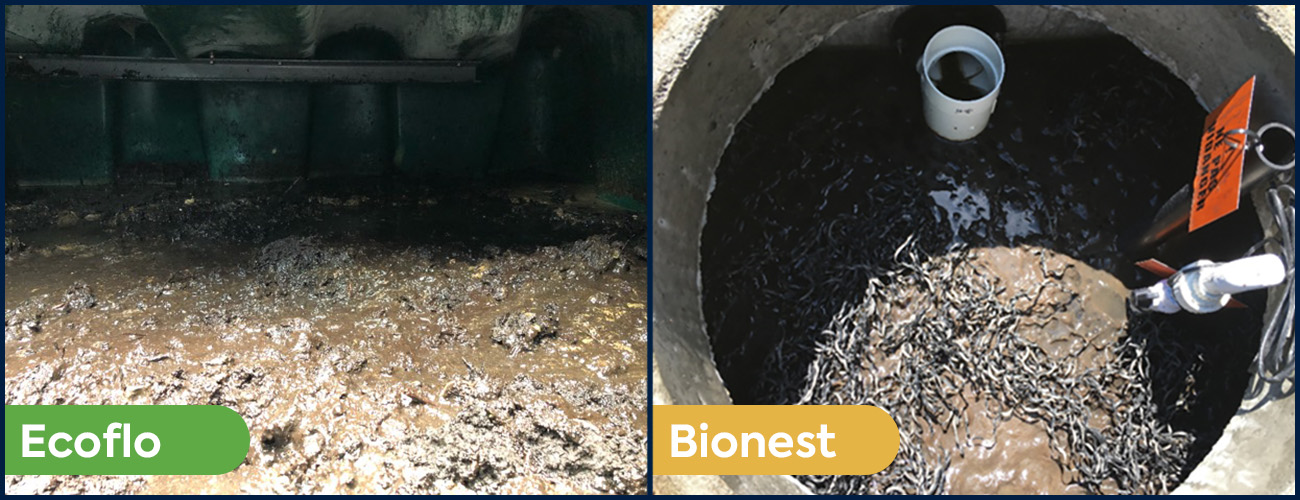
All septic systems generate and accumulate sludge as they treat wastewater.
Without intervention, accumulated sludge will eventually damage a system’s components and clog its septic drain field (often called a leach field). A clogged drain field compromises the entire system and may lead to serious problems:
- improperly treated wastewater
- environmental contamination
- risks to public health
- foul septic odours
- sewage backups in the home
- standing water on the lawn
- costly damage to landscaping, fences, pools, and more
Septic system manufacturers can prevent these problems by planning sludge management programs for their installations. They should also be transparent about the service and maintenance requirements for their systems.
Sludge accumulation in the Ecoflo compact biofilter
The filtering medium in the Ecoflo compact biofilter is a physical barrier. It removes contaminants, but it also retains sludge that would otherwise damage system components and clog the septic drain field.
The filtering medium has a 10-year guarantee, but its lifespan may exceed 15 years. When we renew it, we are also removing the sludge it trapped. The moment we install a new filtering medium, the system is sludge free and its treatment performance is fully restored.
Sludge accumulation in Bionest-type systems
The ribbon-shaped plastic supports inside a Bionest-type system are not a physical barrier. Their purpose is to increase the surface area on which helpful bacteria grow. This improves the system’s ability to treat wastewater, but it does not prevent sludge from clogging components or the drain field.
This drawback is made worse for a few reasons. Bionest-type systems are not equipped with an automatic sludge extraction device. They also come with no real or known sludge management program. As a result, these systems can accumulate significant amounts of sludge. When this sludge clogs components or the drain field, it can lead to costly damages for the property owner.
Since 2020, Premier Tech has performed hundreds of maintenance visits for Bionest-type systems in Québec. Our technicians noted important accumulations of sludge in more than 80% of the units they serviced.
These accumulations caused system problems, including the following:
- clogged fine bubble diffusers
- broken aerator diaphragms
- clogged and/or broken recirculation pumps
- blockages in recirculation lines
- clogged septic drain fields that had to be prematurely replaced
These problems with Bionest-type systems increase the risk of environmental contamination, which can have negative impacts on human health and wildlife.
Ecoflo vs. Bionest maintenance and operating costs
All advanced septic systems need regular maintenance to ensure they treat wastewater effectively. This maintenance is in addition to septic tank pump-outs that are normally required every two to four years.
Maintenance and operating costs for the Ecoflo compact biofilter
If you own the Ecoflo compact biofilter, you can expect the following costs throughout the life of the system:
- annual maintenance
- effluent pump replacements every seven years (on average) if the system needs a pump
- filtering medium renewals every 12.5 years (on average)
Maintenance and operating costs for Bionest-type systems
In March 2021, Dr. Christian Vignoles, an international expert on decentralized wastewater treatment, concluded that when a Bionest-type system is used at 80% of its capacity, the reactor requires sludge removal every two years to maintain its expected treatment performance [French only].
Even when systems are used less intensely, it is safe to say that sludge must be removed from the reactor every two to four years.
With that in mind, if you own a Bionest-type system, it is reasonable to expect the following costs throughout the life of the installation:
- annual maintenance
- electricity costs
- fine bubble diffuser replacements
- aerator diaphragm replacements
- recirculation pump replacements
- effluent pump replacements every seven years (on average) if the system needs a pump
- sludge extraction from the reactor every three years (on average)
Cost comparison over 25 years
Now that you know the maintenance and operating requirements of the Ecoflo compact biofilter and Bionest-type systems, you can compare the cost of each system over a 25-year period.
As you can see, if you own a Bionest-type system, you can expect to pay more than $3,500 in additional maintenance and operating costs over a 12-year period. The gap widens to nearly $8,000 in additional costs over a 25-year period.
The bottom line
The Ecoflo compact biofilter and Bionest-type systems are popular wastewater treatment options for homes and cottages, especially in the province of Québec.
Whichever system you choose, take time to make an informed decision. Compare the design features, ease of installation, treatment results, maintenance requirements, and the long-term costs.
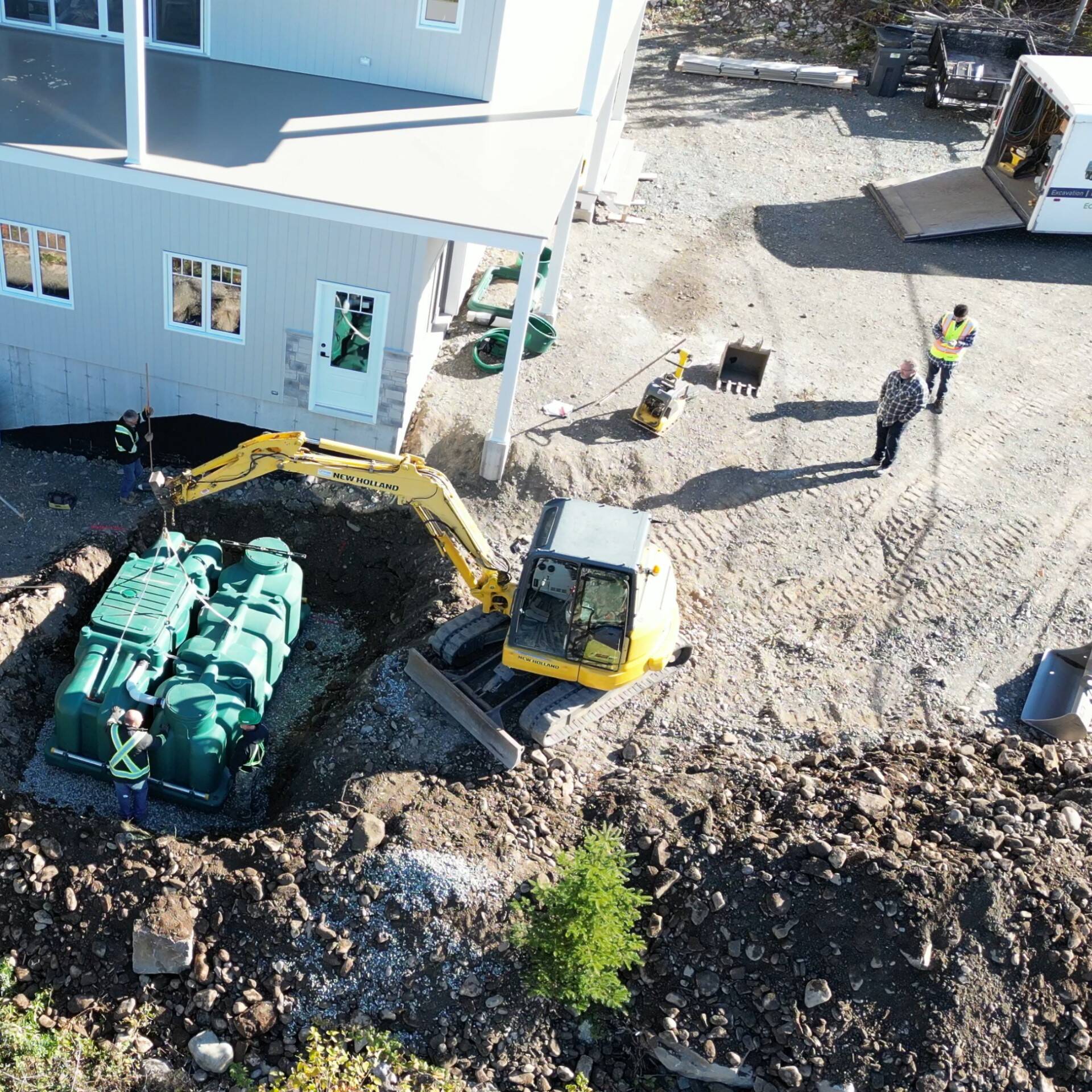
Get the right septic system
Already know which septic system you want? Or need some help to make your decision?
We are here to help! Share your ideas with us and we’ll recommend the best solution for your home, cottage, or business.

